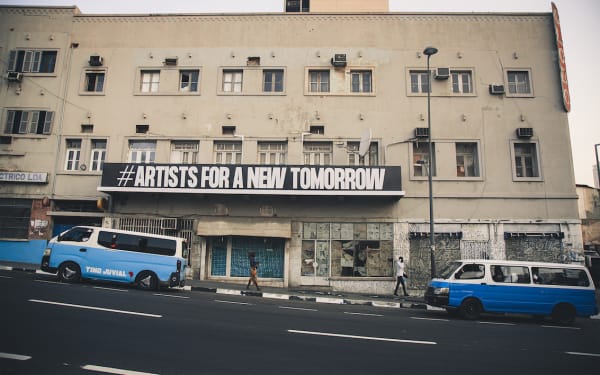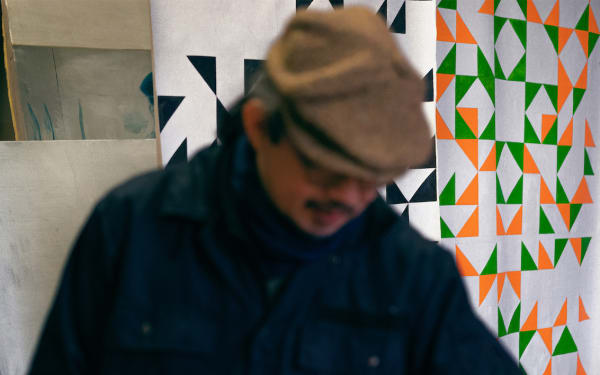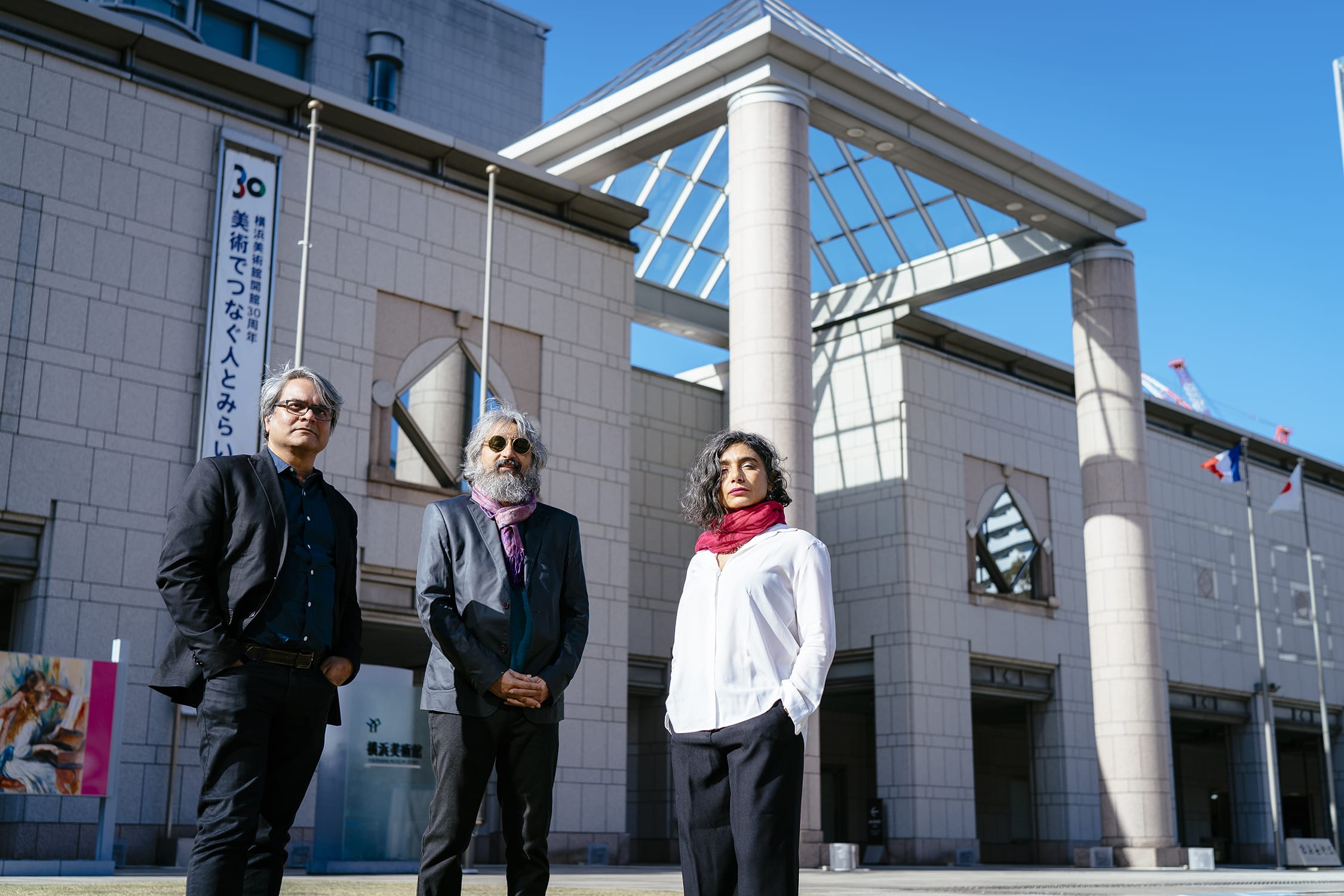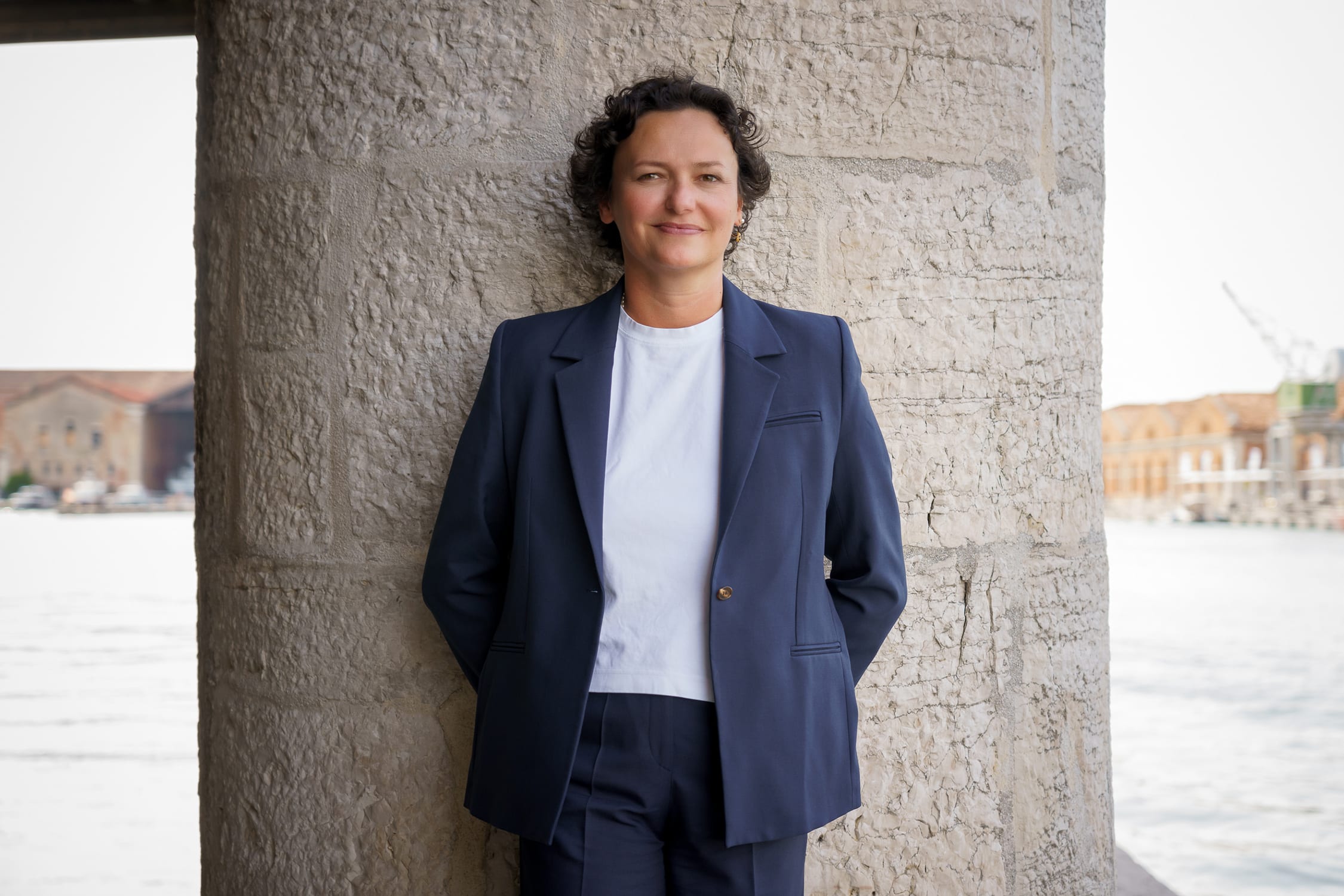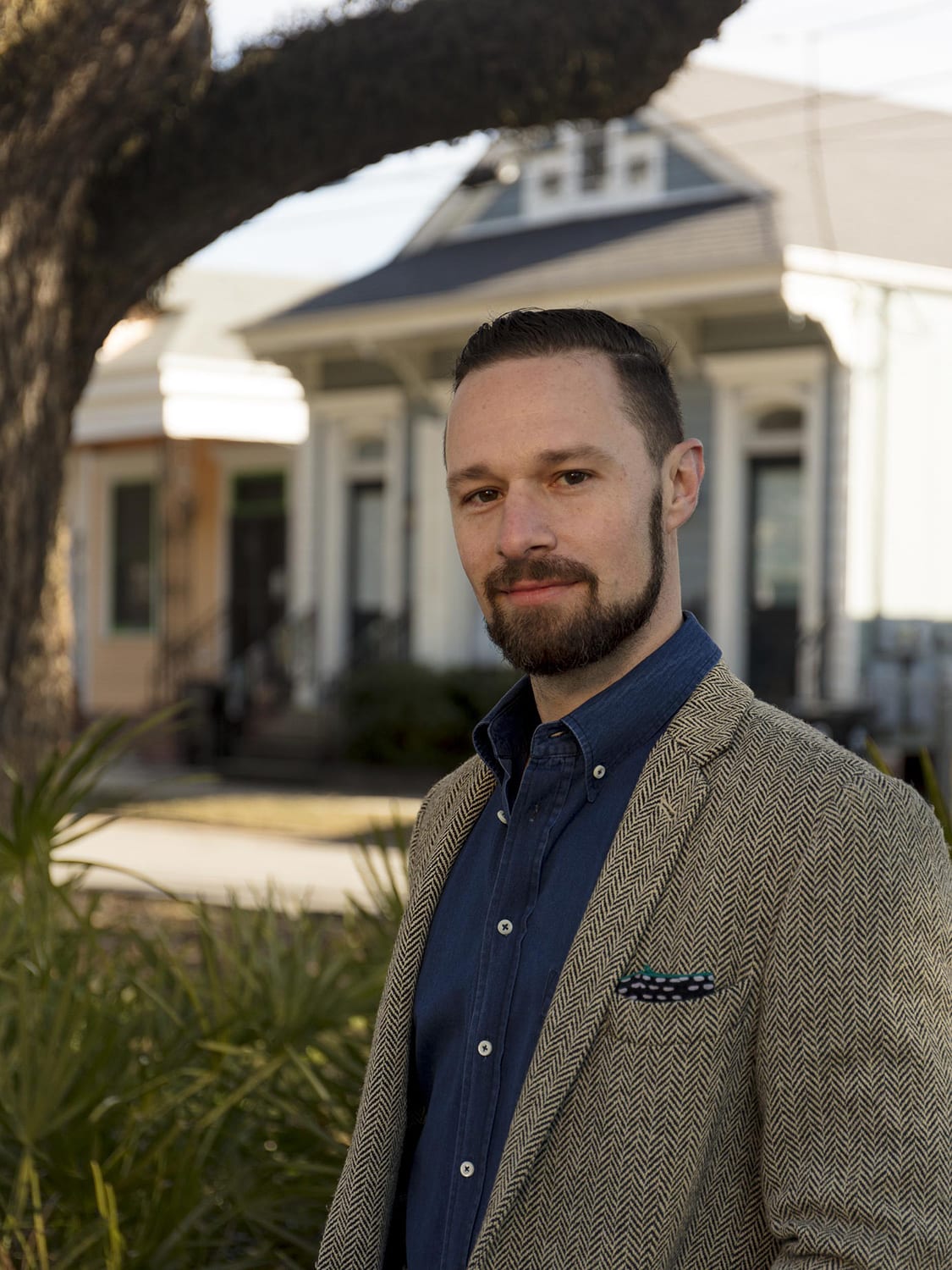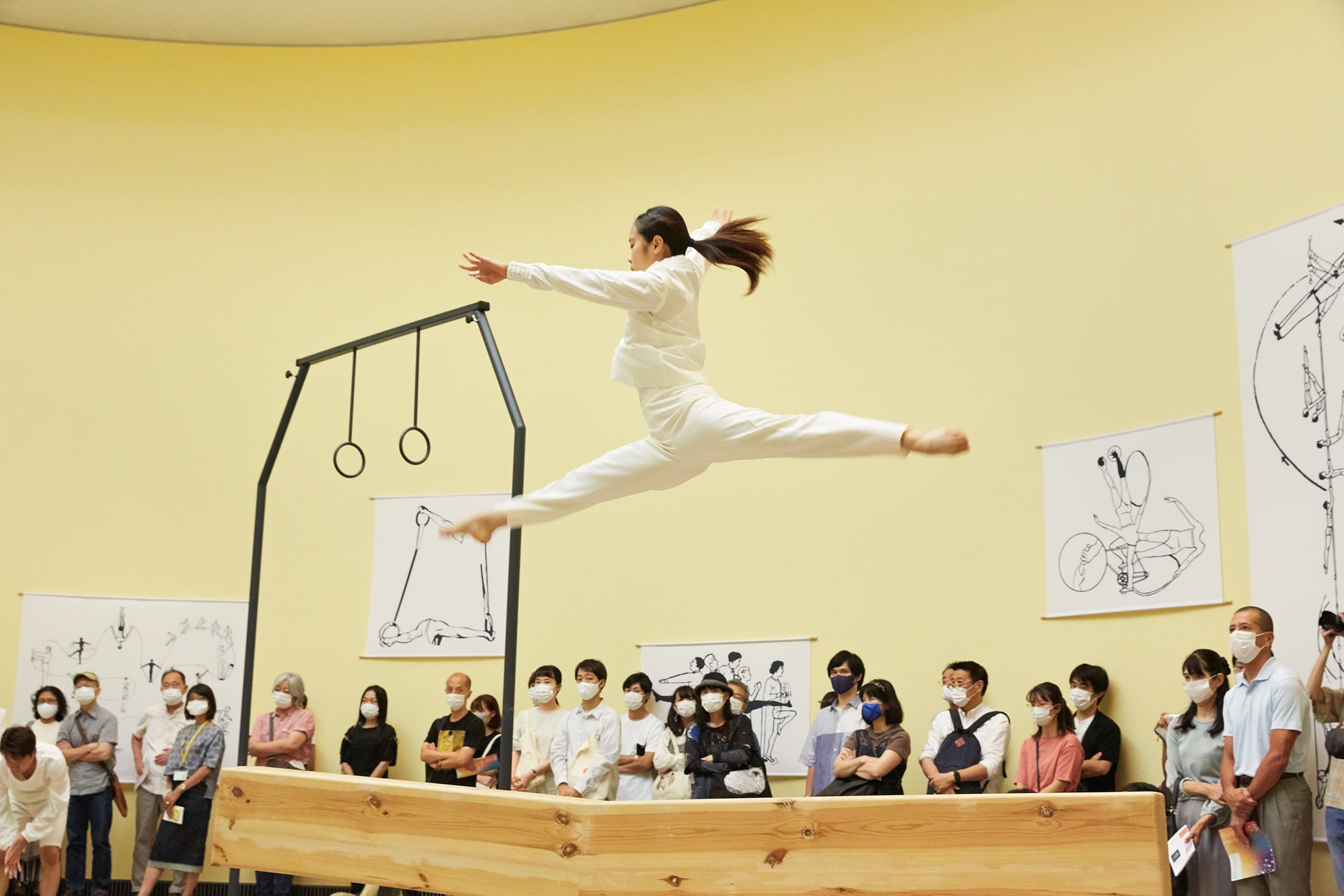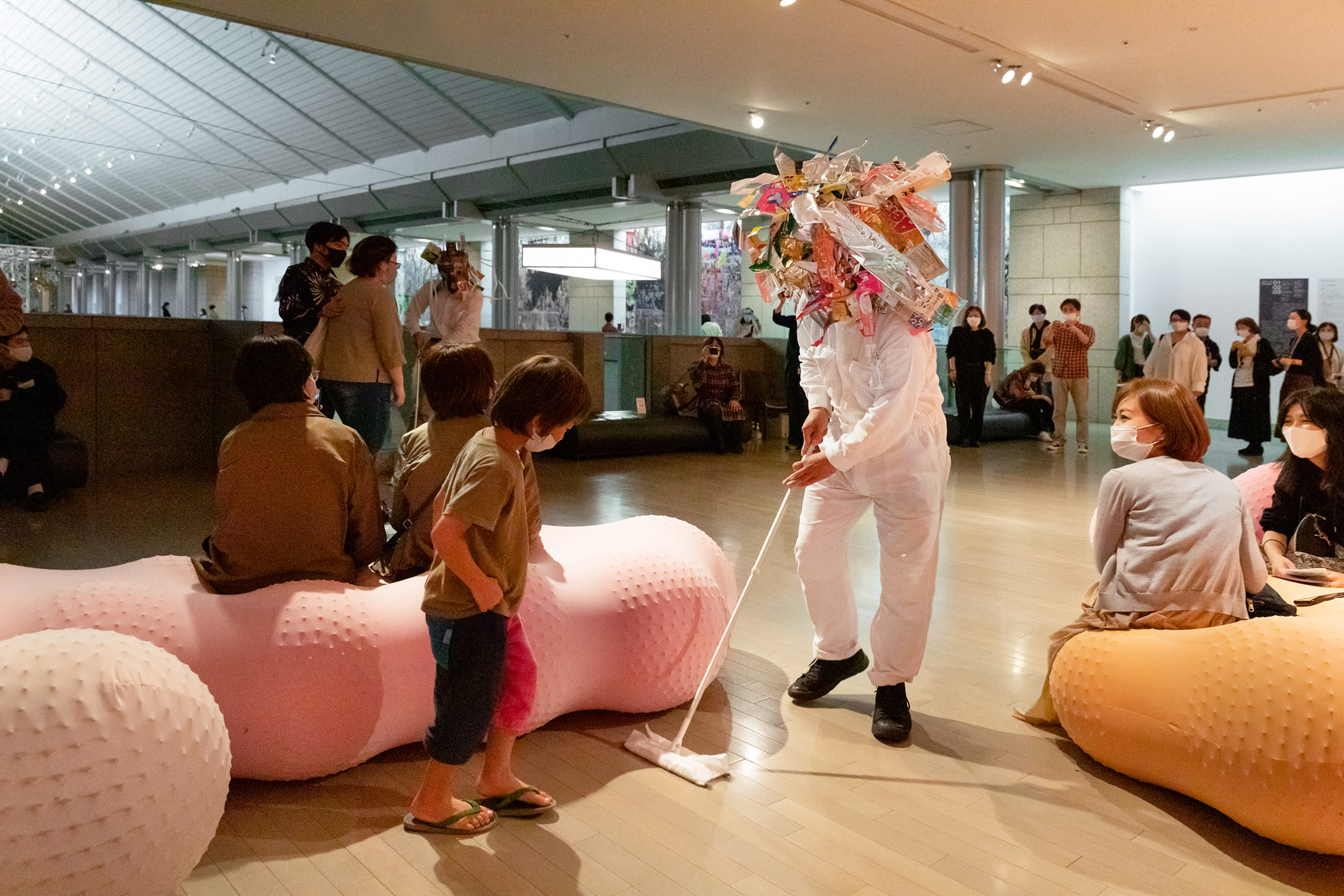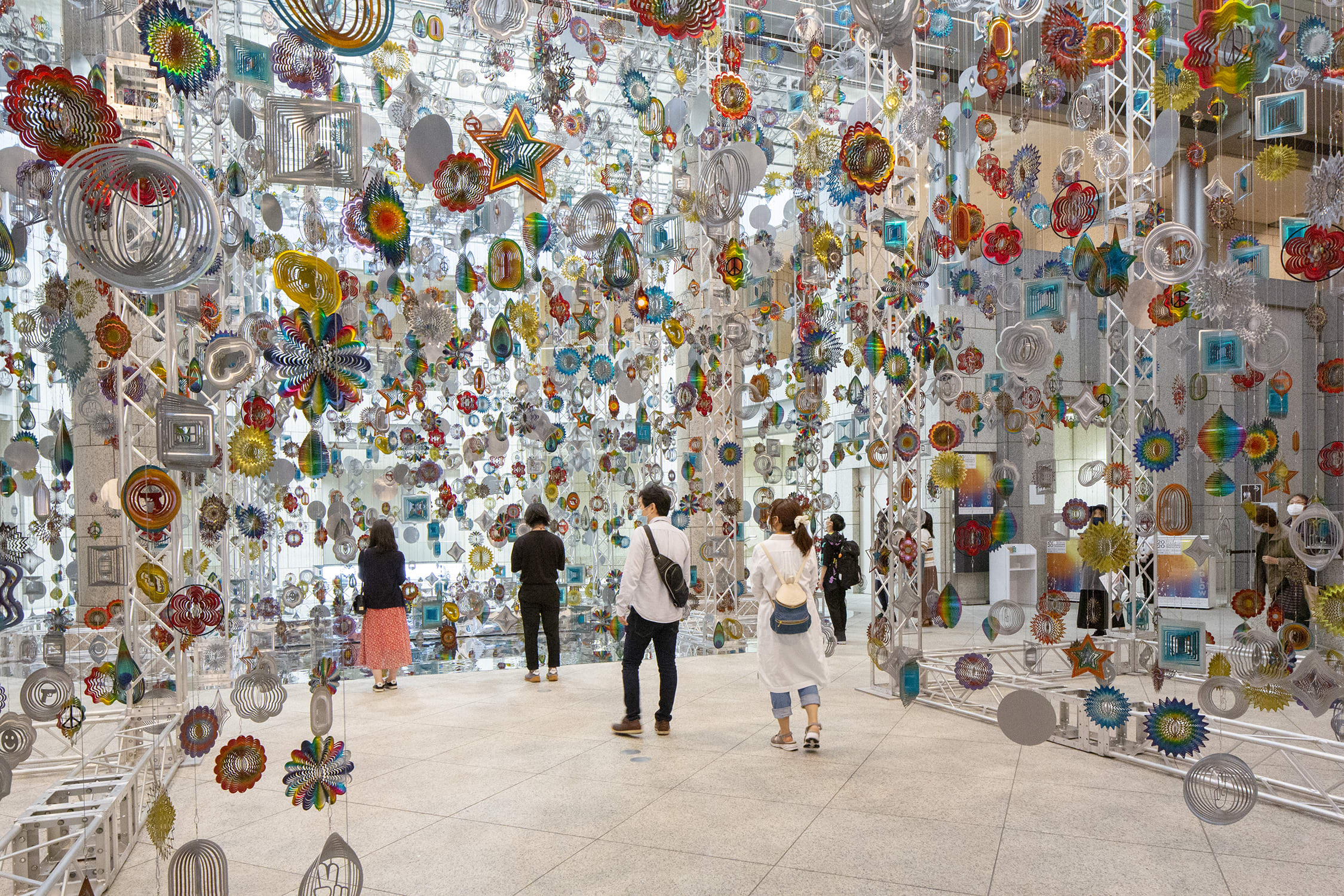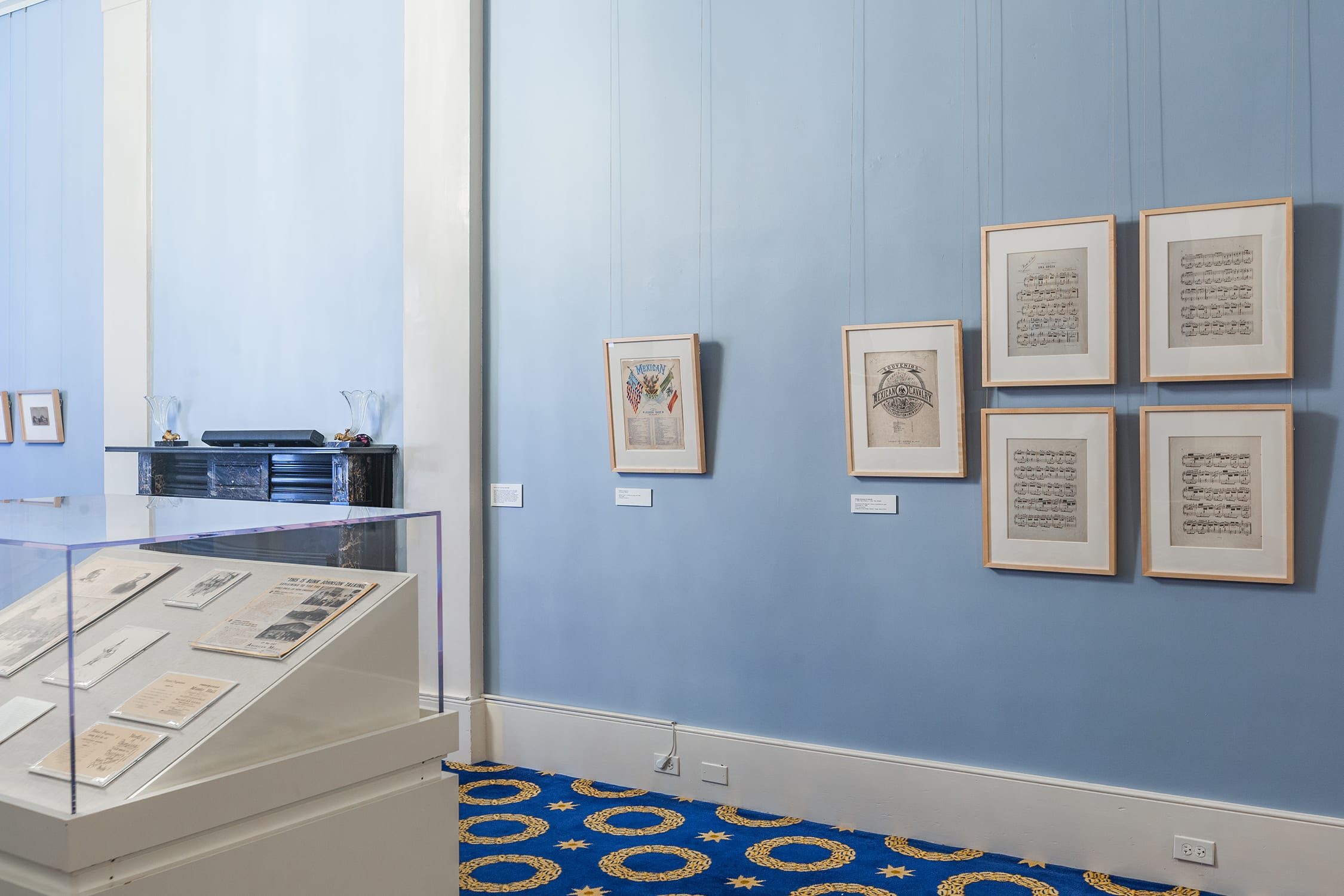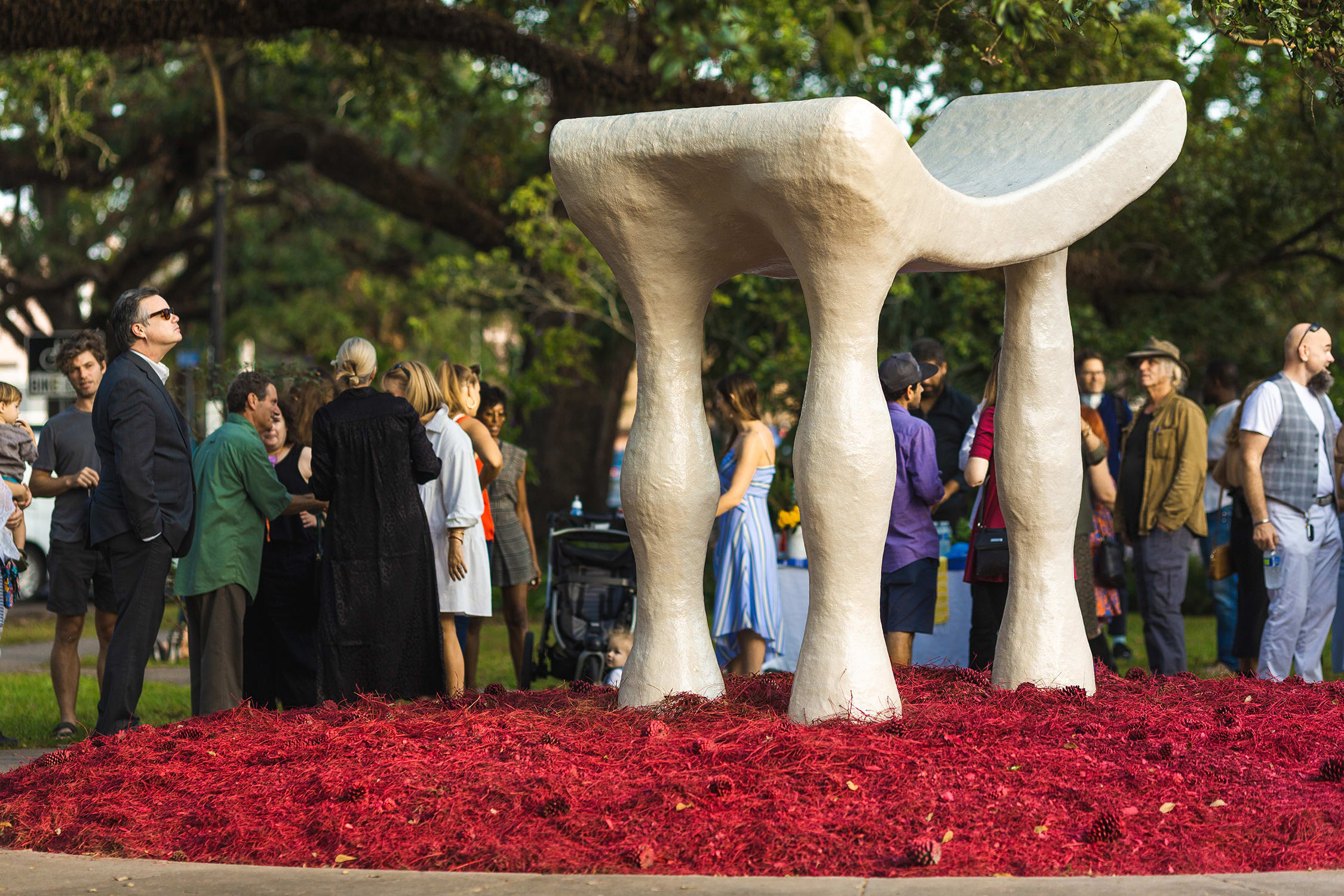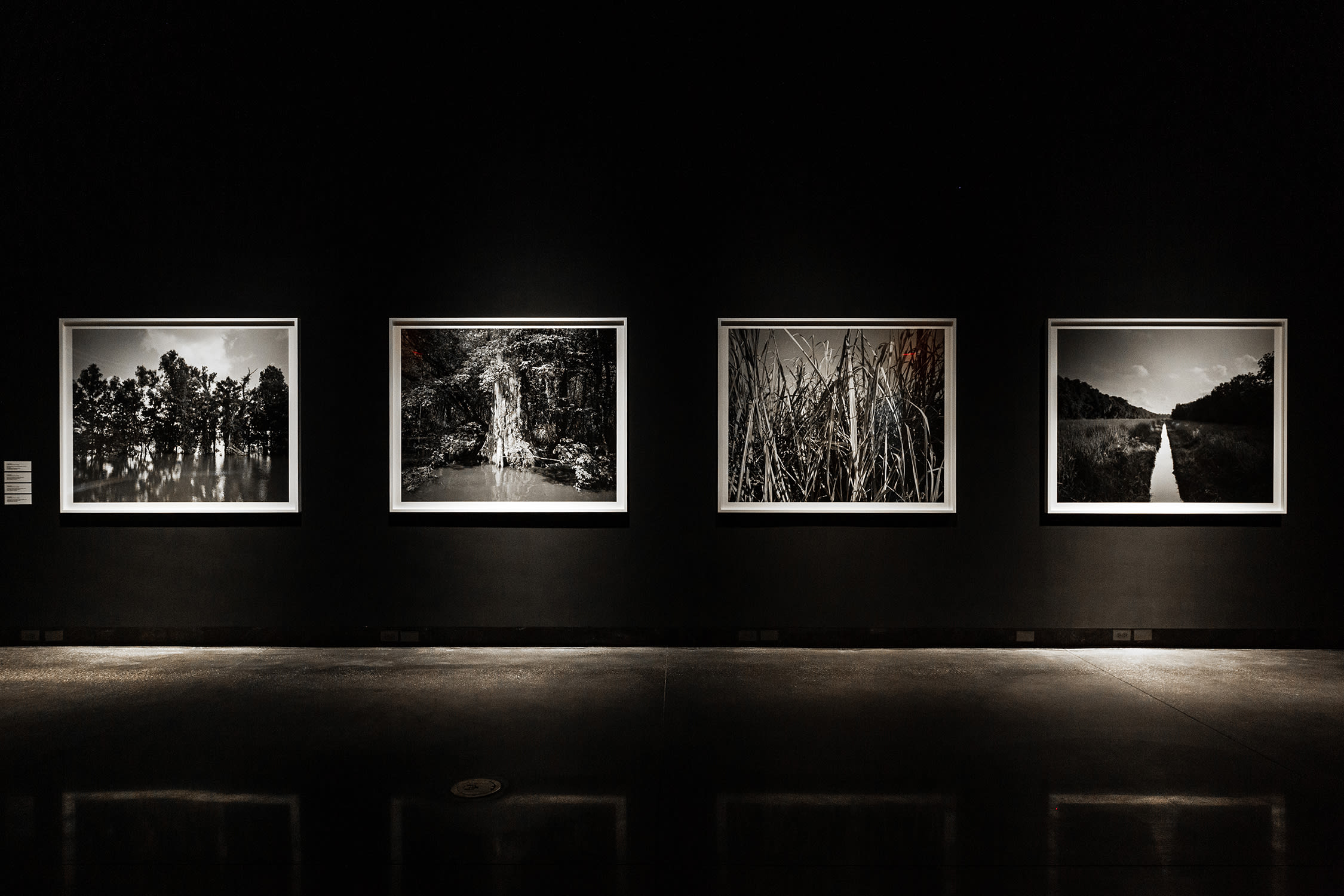Cecilia Alemani had planned to meet with artists all over the world in preparation for the 59th edition of Venice Biennale in April 2022, of which she is the curator and artistic director. Instead, because of the pandemic, Alemani had to meet them on Zoom. 'It was sad, because that’s part of the excitement of creating such a big show,' Alemani says. 'But I was able to meet many more artists than if I were traveling – it saved time. It’s not the same thing as visiting an artist’s studio, but we were able to have smart and thoughtful conversations.'
Just as COVID-19 has upended myriad other cultural activities, so too has it raised questions about biennials – the international art exhibitions that have historically been bellwethers of art trends and breeding grounds for emerging talent. What are the challenges and opportunities? How have such events perhaps been forever altered? What happens to these gatherings when people can no longer safely gather or travel?
'Everything is on the table now,' says Nick Stillman, executive director of the triennial Prospect New Orleans. 'It’s a really good reminder for us not to just follow precedent and has presented us with the opportunity to be really open with our thinking.'
After postponing for a year due to the pandemic, Prospect then had to postpone again due to Hurricane Ida, pushing its gala opening from late October 2021 to late January 2022 (it was supposed to take place at Mardi Gras World, which is on the banks of the Mississippi River). 'I don’t even know if the venue is still available to us,' Stillman said in an interview. 'Everything might need to be postponed yet again.'
Typically mapped out years in advance, biennials and triennials have now been forced into planning that is more flexible, nimble, and unpredictable. 'It’s sticky and it’s messy and it’s sloppy and it requires patience from people,' Stillman says. 'There is so much messaging that needs to happen.'
And while the themes of such international exhibitions are also established early on, current events inevitably worked their way into some of the content of what artists decided to show. The 2020 Yokohama Triennale in Japan, for example, ended up exploring toxicity, 'the concept of cleanliness,' says one of its curators, Monica Narula.
Alemani says the pandemic 'definitely adds a more existential level of the research' and has prompted many artists to look inward. 'We were going a bit too fast and this pandemic has forced us to stop physically and mentally and to reflect on our condition of being in the world,' she says. 'I think artists are really taking a step back and using this pause moment to reflect on their own practice and their own land.'
Numerous such events around the world have been postponed, canceled or downsized. When the pandemic first descended, several biennials were put off, including the Liverpool Biennial, Bienal de São Paulo, Dakar Biennale, and FRONT International in Cleveland. The Biennale of Sydney, which opened in March 2020, had to close after just 10 days. Biennials and triennials were already a logistical circus act. COVID added yet another layer of complications, including shipping delays and travel restrictions, as well as an increase in the cost of transport and materials.
Prospect New Orleans, for example, which includes 51 artists and 20 venues, had to figure out how to provide rapid testing for its staff and installation crews throughout the process. 'None of us budgeted for this,' Stillman says. 'It’s boring but important stuff: Who is the person stationed outside the venue who looks at the vaccine records? What do you do with vaccine records for different states? What do you do with vaccine records for different countries? How do you authenticate them?'
At the same time, organizers say, the crisis has prompted some healthy reforms and reassessment. Biennials have become more local because people are not traveling and they are eager for cultural diversions closer to home. While this may mean a less cosmopolitan audience, it can also make for a more diverse one.
Biennials have had to think creatively about reaching people who can’t come in person, with innovative online options. For the 2020 Yokohama Triennale, the Raqs Media Collective in New Delhi, which curated the show, had artists make things that could only be seen online. Some 300,000 had originally been expected to attend, but only about half that number ultimately showed up in person.
'There is an improvisatory approach,' says Narula, a cofounder of the collective. 'Things seen online wouldn’t be seen in person. We were not just saying, "Take pictures of physical pieces and put them online" – not thinking of digital as a shadow of the ideal.'
In light of these virtual capabilities – and the potential wrench in the works along the lines of a virus or a natural disaster – art experts say the scale of biennials and triennials has to change. So, too, will the timing, some predict, with events rolling out over a longer period and a move away from one big opening weekend. 'I think eventually it will be a bit more modest in terms of the whole experience,' Alemani says.
Biennials are also thinking about their carbon footprint, how that can be reduced by fewer trips on airplanes and shipping materials. 'The environmental implications can’t be ignored; there are ways we can become more efficient,' Stillman says. 'What’s the phrase – "Don’t let a crisis go to waste?" Certainly, COVID has presented crises.'
Indeed, climate change itself has presented larger questions, like how to justify trying to preserve an art exhibition in places like New Orleans, when that city is dealing with people left homeless by a hurricane. Stillman says he was balancing how 'not to pressure art workers where they’re putting Prospect before their families or other types of rebuilding that need to be done'.
A more basic question: Do we need biennials anymore? Are they worth saving?
Art experts say biennials are not only important for those directly involved, but also for the larger ecosystem around, namely the cities that host them. 'Places that might have lain fallow get transformed or reimagined with the biennial,' Narula says.
In addition, there is perhaps an even greater hunger for such gatherings as an antidote to the strife of what’s happening in the world, places where people with a shared passion for art can convene, converse, and find comfort. 'Art is a great way to communicate with people and to connect with reality,' says Rafal Niemojewski, executive director of the Biennial Foundation. 'For people who have been in some sort of lockdown, we clearly all suffer this isolation and loneliness. Once we can actually come back, it’s going to be very therapeutic. It’s going to feel like we survived and we’re coming out very strong.'
This article was originally published in the Art Basel Miami Beach 2021 magazine, guest-edited by Xaviera Simmons.
Robin Pogrebin has been a reporter for The New York Times since 1995, where she covers cultural institutions, the art world, architecture, and other subjects.
Captions for full-bleed images, from top to bottom: 1. Installation view of Eva Fàbregas, Tangles (detail), 2020, in the Yokohama Triennale 2020. Photo by Otsuka Keita. Courtesy of Organizing Committee for Yokohama Triennale. 2. Installation view of Sharon Hayes, If we had had, 2021, in Prospect.5, 'Yesterday we said tomorrow', 2021–22, at 3162 Dauphine Street. Photo by Jose Cotto. 3. Installation view of Ivana Franke, Resonance of the Unforseen, 2020, in the Yokohama Triennale 2020. Photo by Keto Ken. Courtesy of Organizing Committee for Yokohama Triennale. © Ivana Franke. 4. Kameelah Janan Rasheed, Future Forms (detail), 2021. Included in Prospect.5, Prospect.5, 'Yesterday we said tomorrow', 2021–22, at Amistad Research Center, New Orleans. Photo by Jose Cotto.
